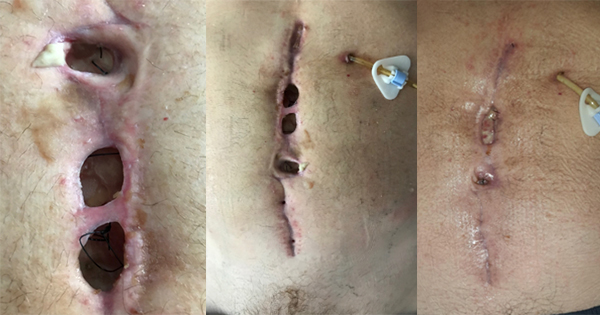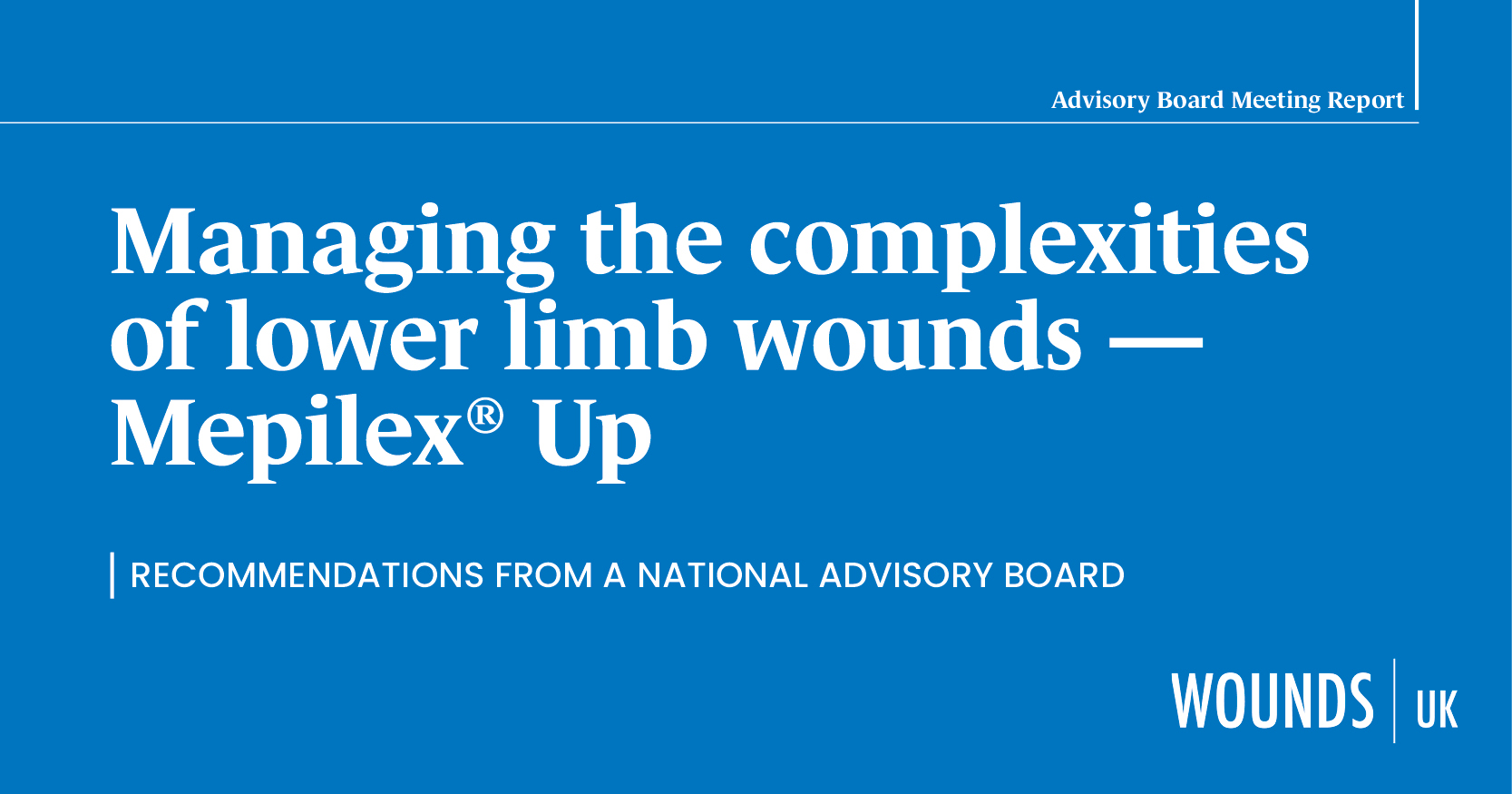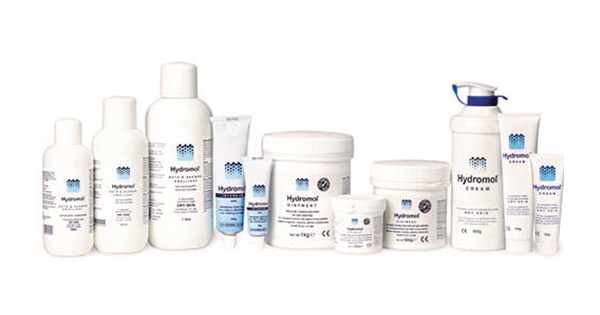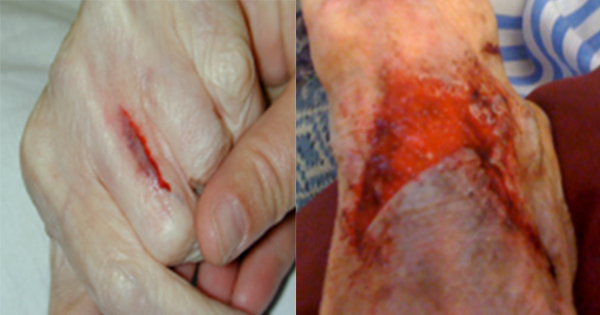This meeting report is based on a ‘Made Easy’ workshop that took place at the Wounds UK Annual Conference in Harrogate, on 11th November 2024. The workshop and meeting report were sponsored by an educational grant from Smith+Nephew.
The aim of this interactive workshop was to highlight the current unmet needs in treating surgical wound dehiscence and share positive outcomes from a non-healing wound pathway. The participants also provided their feedback on the current challenges they face in their own clinical settings when treating non-healing wounds. The majority of participants were community nurses and nurse specialists. This care setting often manages cases of surgical wound dehiscence after the discharge of surgical patients from acute care settings.
Prevalence of dehisced surgical wounds
Eva Harris discussed data published by Guest et al (2018; 2020; 2023) relating to current prevalence and unmet needs surrounding management of surgical wounds in the UK. Guest et al (2023) assessed the prevalence of surgical site infections (SSIs) (n=50,000 adults), identifying that 11% developed an SSI (Guest et al, 2023). These studies demonstrated that unhealed surgical wounds cost approximately £2,024 per patient (Guest et al, 2020), whereas, a healed surgical wound costs approximately £884 per patient (Guest et al, 2020). Of all patients experiencing an SSI, the vast majority were treated in community settings, highlighting the burden of care on community clinicians in treating SSIs (Guest et al, 2018; 2020; 2023).
SSIs and dehiscence are two of the most common complications in surgical wounds, and can have a significant effect on patients (National Library of Medicine [NLM], 2024; Muller-Sloof et al, 2024). Wound dehiscence is a post-surgical complication where the incision re-opens; it may also be known as wound breakdown, wound disruption, or wound separation (NLM, 2023a).
Delegates attending the Made Easy session (n>95) were asked if they considered dehisced surgical wounds to be ‘non-healing’. Over 71% of those responding stated they did not consider these wounds to be non-healing. Eva explained that this response highlights a significant unmet need in UK clinical settings: if clinicians do not recognise dehisced surgical wounds as non-healing, they are less likely to consider
the latest, evidence-based treatments for early management of these wounds.
Dehisced surgical wounds are non-healing wounds
To understand this concept, it is important to consider the definitions of non-healing versus dehisced surgical wounds.
Surgical wounds are incisions that have been made in the skin with or without exposure or protrusion of underlying tissue, organs or implants (Sandy-Hodgetts et al, 2023). In a surgical wound on a normal healing trajectory, the margins of the surgical incision stay closed. A surgical wound becomes dehisced when incision margins separate, whether at a single point, or in multiple regions (Sandy-Hodgetts et al, 2023). Separation may involve the full length of the incision and may affect some or all tissue layers. A dehisced incision is susceptible to infections (Sandy-Hodgetts et al, 2023). Eva highlighted that surgical wounds may become dehisced several weeks after surgery and it is, therefore, crucial to understand the underlying pathophysiology of dehiscence and failure of wound healing.
The definition of non-healing wounds was introduced next: wounds are considered ‘non-healing’ if they have not started to heal after approximately 2–4 weeks (Cullen and Gefen, 2023). Different wound care guidelines may vary slightly on the exact duration after which a wound should be considered non-healing. For example, some guidelines may consider
‘6 weeks’ or ‘≤3 months’ as the time point at which a wound should be considered non-healing (Cullen and Gefen, 2023).
As a result of these variations in definitions, and a lack of understanding of the underlying pathophysiology of chronicity, clinicians may not classify dehisced wounds as non-healing wounds. There is a significant unmet need to educate clinicians on the pathophysiological factors that are similar between wound dehiscence and chronicity.
Pathophysiology of non-healing versus dehisced surgical wounds
Wound dehiscence may typically occur
5–8 days post-surgery (NLM, 2023a), which is dissimilar to the ‘2- to 4-week’ timepoint at which a wound may be considered non-healing. Despite this apparent discrepancy, the pathological factors that cause wound dehiscence can also lead to chronicity. These factors include diabetes, smoking, ischaemia, infection, malnutrition and obesity (NLM, 2023a).
Furthermore, the consequences of wound dehiscence are also similar to the outcomes typically associated with non-healing wounds (e.g. infection; NLM, 2023a).
Eva shared data from Guest et al (2020) on the overall prevalence of wounds in a randomly selected cohort of 3,000 patients (56% female versus 44% male patients); the mean age of patients was 57.9 years, and approximately 17% of all patients were smokers (Guest et al, 2020). Using these data, Eva highlighted the clinical settings in the UK where the majority of care for surgical wounds is undertaken.
The impact of clinicians’ experience and care setting
Evidence suggests that clinician-related factors can play a significant role in healing failure, highlighting the need to educate clinicians on the importance of appropriate wound treatment techniques and early intervention with evidence-based approaches (Carlson, 1997; NLM, 2023a). This is especially true for primary care settings where the majority of SSIs are treated (Guest et al, 2023). Figure 1 shows the range of clinical settings in the UK where the majority of surgical wounds are treated. Consistent with the data in Figure 1, the majority of participants in this workshop were community nurses and nurse specialists.
Eva asked the delegates who would they primarily refer to if a patient has a dehisced surgical wound. Over 71% of the participants considered that a patient with a dehisced surgical wound should be referred to the local Tissue Viability Nurse (TVN).
In the experience of the speaker, these referrals do not happen promptly, with some patients not receiving a TVN referral despite living with a dehisced surgical wound for months. Furthermore, very few workshop participants had access to a referral pathway for secondary care, especially when working solely in community care settings. In addition, some general physician practices may not be able to provide a sufficient number of appointments, leading to delays in care and wound deterioration. There is a significant need to introduce interventions that can support patients and families and offer advice regarding appropriate self-care.
There is a lack of both knowledge of and access to appropriate referral pathways. There is also a lack of accurate and thorough wound data records, especially once the wound has healed or appears to be on a healing trajectory initially.
The participants highlighted that, as a result of these issues, the latest evidence-based interventions are only considered when traditional interventions have failed. By this time, however, the wound may have deteriorated, and the expected outcomes worsened.
Challenges and benefits of advanced interventions
Eva highlighted the importance of timely intervention with advanced wound treatments, such as negative pressure wound therapy (NPWT). The participants were asked to share the major challenges they face when considering advanced treatment options (e.g. NPWT) for managing dehisced surgical wounds. The major challenges highlighted by the participants included infection, pain, exudate management, cost, lack of training on advanced treatments and challenging anatomical locations (e.g. proximity to orifices). On the benefits of advanced therapies, the participants were aware that these treatments can help achieve better exudate management and improved patient outcomes (e.g. improved circulation, appropriate wound closure, reduced healing times).
However, only a few participants had an established pathway for dehisced surgical wounds. Out of >95 workshop participants, only one was currently in the process of implementing a dehisced surgical wound pathway in their setting. This indicates that, in many care settings, there is a need to develop and implement a validated non-healing wound pathway for all wound aetiologies. Addressing this unmet need can help ensure that all non-healing wounds are appropriately treated after accurate patient assessment in a timely manner, with advanced therapies considered as a treatment option.
Single-use negative pressure wound therapy (sNPWT)
Traditional NPWT (tNPWT) has shown promising outcomes as a prophylactic therapy for preventing dehiscence in at-risk patients (Galiano et al, 2018; Johnson et al, 2021; El Hawa et al, 2022; NLM, 2023b). Recent data indicate that, when overall cost-benefit is considered, NPWT versus standard wound dressings may provide improved healing and quality of life outcomes (Liew et al, 2022). However, where wounds do dehisce, timely treatment in community settings is vital for good outcomes for this patient population.
PICO™ sNPWT (Smith+Nephew) is an advancement of traditional NPWT (tNPWT) and has demonstrated overall improved patient outcomes when compared to tNPWT (Kirsner et al, 2019; Kirsner et al, 2020; Wounds UK, 2022). Using PICO™ sNPWT, a non-healing wound pathway has been validated across multiple pilot sites in the UK over the past 7 years, and has already demonstrated promising initial results for several wound aetiologies (Wounds UK, 2022).
Eva shared case studies from her own care setting to highlight the implementation of the PICO™ sNPWT pathway for dehisced surgical wounds.
Implementing the PICO™ sNPWT
pathway – case studies
For improving healing outcomes in her clinical setting, Eva summarised the following major challenges experienced by her team:
- Cost – the upfront unit cost for sNPWT was a major consideration
- Access to sNPWT/procurement
- Patient selection/suitability for sNPWT
- The need for clinician training
- Clinicians’ perception of sNPWT (e.g. previous experience with sNPWT)
Upon overcoming these challenges, the pathway was successfully implemented; outcomes from three case studies are
shared below.
Case study 1:The first case study was of an otherwise healthy male patient (aged 59), who presented with a 6-week-old dehisced surgical wound. The wound incision had failed in three different places. The patient had to undergo cavity filling every day, with a significant impact on his mental health. The patient’s goal from their treatment was to achieve a ‘new normal’, without requiring daily nurse visits and interventions.
After a cost-benefit assessment, the PICO™ sNPWT pathway was implemented, and wound closure was achieved between 4 and 5 weeks [Figure 2]. The pathway implementation helped the patient resume his normal life activities after discharge.
Case study 2: This 25-year-old female had undergone an emergency Caesarean-section during the birth of her first child. She experienced wound dehiscence and, upon re-admission to the hospital, underwent a surgical debridement. She was deemed approximately 24–48 hours away from developing necrotising fasciitis. Although conventional NPWT was applied before her discharge to community care, she was in significant pain and found it challenging to carry the NPWT bag around with a newborn baby. Therefore, a decision was made to implement the PICO™ sNPWT pathway [Figure 3]. Within 2 weeks of implementation, the patient achieved significant healing. This patient was able to resume her daily life activities, including looking after her newborn, and was very keen to share her story.
Case study 3: This 31-year-old female patient had complex comorbidities. She had a history of bowel obstruction, Crohn’s disease and depression. She presented with a dehisced surgical wound, of 8-week duration [Figure 4]. The PICO™ sNPWT pathway was implemented and wound closure was achieved in 4 weeks [Figure 4]. In the patient’s own words, she ‘was in a very dark place’ before the implementation of the pathway. After receiving PICO™ sNPWT, the patient was able to attend a wedding, as well as travel for a holiday. PICO™ sNPWT allowed her to manage her wound and not be concerned about the wound leaking or having to change the dressing every day, achieving rapid wound closure. This case study highlights the impact of the PICO™ sNPWT pathway on improving quality of life for people with complex medical histories. Although the initial treatment cost may appear high, the overall impact and outcomes may not have been achievable without implementing PICO™ sNPWT.
Conclusions
This workshop highlights the significant unmet needs in UK primary care settings for implementing a unified definition of, and treatment for, dehisced surgical wounds. The participant polling during this workshop showed that the majority of clinicians do not yet consider dehisced surgical wounds to be non-healing, indicating the need to improve education and awareness about the underlying pathophysiology. Furthermore, despite the majority of participants working in primary and community care settings, where most patients with dehisced wounds present, there is a lack of access to appropriate, validated pathways for dehisced surgical wounds. This delay in timely interventions likely results in poor healing and quality of life deterioration (Hughes et al 2021).
Using case studies, the speaker shared her own experience of implementing the validated PICO™ sNPWT pathway for managing dehisced surgical wounds (Wounds UK, 2022). All three case studies showed significant improvements for patients, with an overall long-term cost benefit noted. This workshop highlights the potential avenues in UK care settings for improving healing outcomes for people living with dehisced surgical wounds.





